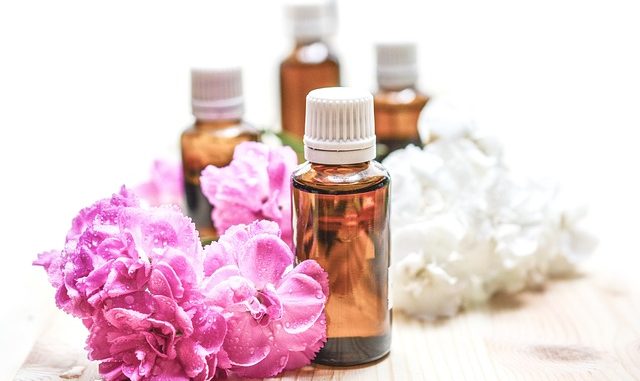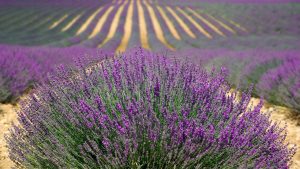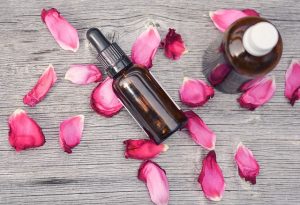
The fragrance and aroma industry has been a significant and thriving sector with a wide range of applications, including perfumes, cosmetics, personal care products, home care products, and aromatherapy. Whilst for some of us it might be the only item we wear its a subject that depends wholly on science as opposed to art.
Throughout history, people have tried to improve their odour and smell by disguising their own noxious notes with more pleasant aromas. Most perfumes are designed to make us feel good. It is designed to be applied to the skin and hair, to clothing. No perfume smells the same on any two people.
The fragrance market alone is a booming concern. It was worth $46 billion in 2022 and is thought to grow to $69 billion by 2010. We must be purchasing an extraordinary amount of scent. Nowadays, if you are a celebrity then you must have a fragrance to your name. What’s the point of being well-known if you cant be linked to a really nice smell!
Key Aspects of The Industry
Market Growth
The industry had been experiencing steady growth over the years due to increasing consumer awareness, rising disposable income, and the growing demand for personal care and wellness products.
Ireland’s men in 2023 voted Lynx Africa as the best scent of all. It has an iconic vanilla-geranium aroma which is highly desirable for young men. At least 85% of men in the 16 to 24 age bracket have smothered themselves in this scent. A third of respondents in the survey revealed they had received compliments when wearing the scent.
Innovation and Sustainability
There was a notable emphasis on innovation in fragrance and aroma creation, with a focus on developing unique and appealing scents to cater to diverse consumer preferences. Additionally, there was a rising trend towards sustainability, with companies incorporating eco-friendly and natural ingredients in their formulations to meet consumer demands for green and clean products.
The rise of artificial intelligence cannot be underestimated either. An aroma is highly subjective when it comes to being described. Perfumers have relied on communication from their customers through consumer feedback. Givaudan have launched the DigiPulse (TM) which is an olfactory social listening tool that uses AI to gther data and categorise it using 2.5 million comments from a range of social medial platforms. It covers customer’s perspectives and preferences for fragrance.
Natural and Organic Products
The popularity of natural and organic fragrances and essential oils had been on the rise as consumers became more conscious of the potential health and environmental impacts of synthetic ingredients.
Digital Transformation
The industry had started embracing digital technologies, such as AI and data analytics, to improve product development, marketing strategies, and consumer engagement. Online retail and e-commerce had also become important channels for fragrance and aroma products.
Regulatory Environment
The fragrance and aroma industry is subject to various regulations related to ingredient safety, labeling, and environmental impact. Companies had been making efforts to comply with these regulations to ensure product safety and transparency.
Aromatherapy and Wellness
Aromatherapy gained popularity as an alternative and complementary therapeutic approach, contributing to the expansion of the industry. Aromatherapy products like diffusers, essential oils, and scented candles became widely available. According to the Global Aromatherapy Market report this element of the industry will grow by 12.5% CAGR in the next ten years.
Aromatherapy isn’t just limited to spas and relaxation, it has also found its way into culinary imagination. Using essential oils to enhance the delicious aroms of food is seen as an up and coming trend in the industry and one which is bringing together the fragrance and aroma industry into food manufacture too.
Impact of the COVID-19 Pandemic
The COVID-19 pandemic had a mixed impact on the industry. While there was a temporary dip in sales due to lockdowns and reduced consumer spending, there was an increased interest in home fragrance products as people sought comfort and relaxation in their living spaces during the pandemic.
What Has Manufacturing Done For Us?
The manufacturing processes involved in obtaining fragrances and aromas for consumer products are intricate and require a combination of art and science. These processes vary depending on the type of fragrance or aroma desired and the end product in which it will be used. In this comprehensive overview, we will explore the key steps involved in obtaining fragrances and aromas, including essential oils, for consumer products.
Sourcing Raw Materials
The first step in fragrance and aroma manufacturing is sourcing the raw materials. For essential oils and natural fragrances, this involves obtaining plant materials such as flowers, leaves, roots, and fruits from various botanical sources. Depending on the desired scent, these botanicals may be sourced from different regions worldwide, each contributing unique aromatic compounds to the final product. Some companies may also use synthetic fragrances, which are produced through chemical synthesis in a laboratory.
Extraction of Essential Oils
For natural fragrances and aromas, the most common method of obtaining essential oils is through extraction. There are several extraction techniques but these three are the main ones:
a. Steam Distillation: The most traditional method, steam distillation involves passing steam through the plant material to vaporize the essential oil, which is then condensed and collected.
b. Cold-Pressing: This method is primarily used for citrus fruits, where the peel is pressed to release the essential oil.
c. Solvent Extraction: In this process, a solvent is used to extract the aromatic compounds from the plant material, leaving behind a concrete or resin, which is then further processed to obtain the essential oil.
Fractionation
After the extraction process, the obtained essential oil may undergo fractionation to isolate specific aromatic compounds. Fractionation helps achieve greater control over the scent profile and ensures consistency in the final product.
Formulation and Blending
Creating a fragrance or perfume is an art form that involves blending various essential oils, aromatic compounds, and other ingredients to achieve a unique and harmonious scent profile. Perfumers, often referred to as “noses,” possess expert knowledge in fragrance composition and utilize their sensory skills to create balanced and captivating aromas.
Dilution and Aging
Once the fragrance is formulated, it is often diluted with alcohol or a carrier oil to achieve the desired concentration. Some fragrances may undergo an aging process to allow the ingredients to mature and blend together, enhancing the complexity and depth of the scent.
Aging requires placing the perfume into a closed vessel with relief or safety valve. Aging involves two types of physical methods such as mechanical stirring, ultrasound, UV light irradiation and son on. The other is chemical treatment which uses oxygen bubble oxidation, hydrogen reduction, silver chloride catalysis. These methods reduce the sharpness of the perfume and allow it to mellow.
Cooling
Some perfumes become translucent or opaque in cold months such as winter. To avoid this phenomenon, the finished perfume is cooled during production. The impurities in the perfume are removed by filtration so that the fragrance retains its clarity.
Contaminants
Generally, contaminants may be ones that occur as adulterants in the final fragrance but they are also formed during cooling. They occur as hazes, waxes, colloidal particles, colours and odours.
Filtration
A commonly applied method to remove insoluble substances produced during aging and cooling.
The types of filtration unit used are
- stainless steel filter housings with a hydrophilic PES membrane pleated filter
- Depth filters
- Lenticular filters
Some manufacturers try to dispense with this technology because it has a tendency to introduce large amounts of oxygen which hasten the deterioration of the fragrance through oxidation.
Quality Control
Throughout the manufacturing process, strict quality control measures are employed to ensure consistency, safety, and compliance with industry regulations. Analytical techniques, such as gas chromatography and mass spectrometry, are used to analyze the composition of the fragrance and verify its purity and authenticity.
Application in Consumer Products
Fragrances and aromas are used in a wide range of consumer products, including perfumes, colognes, body lotions, shampoos, soaps, candles, air fresheners, and household cleaning products. The manufacturing process for these products involves incorporating the fragrance at the appropriate stage, ensuring that the scent is stable and long-lasting.
Packaging and Distribution
Once the fragranced products are manufactured, they undergo packaging and labeling before being distributed to retailers or directly to consumers. Proper packaging is essential to preserve the fragrance’s integrity and prevent any degradation during transit and storage.
Sustainability Considerations
In recent years, the fragrance and aroma industry has seen a growing focus on sustainability and eco-friendly practices. Companies are increasingly seeking environmentally responsible sourcing of raw materials, reducing waste, and incorporating recyclable or biodegradable packaging.
Research and Development
The fragrance and aroma industry is continually evolving, driven by consumer preferences, emerging trends, and advancements in technology. Research and development play a crucial role in creating innovative scents, exploring new extraction methods, and developing more sustainable and natural fragrance options.
What are the main challenges in extracting essential oils on an industrial scale from raw materials?
Obtaining essential oils from raw materials is a complex and challenging process that requires careful consideration of various factors. The extraction methods used and the characteristics of the source materials can significantly impact the quality, yield, and overall efficiency of the process. In this detailed explanation, we will explore some of the common challenges in extracting essential oils from raw materials.

Source Material Variability
One of the primary challenges in essential oil extraction is the natural variability of source materials. Different batches of botanicals may have varying chemical compositions, which can affect the scent profile and potency of the extracted essential oil. Factors like climate, soil conditions, altitude, and harvesting methods can all contribute to this variability. Perfumers and manufacturers must carefully select and monitor their raw materials to maintain consistent product quality.
Plant Availability and Seasonal Changes
Certain botanicals used for essential oil extraction may not be available year-round or may have limited growing seasons. For example, some flowers bloom only during specific times of the year. This limitation can lead to fluctuations in the supply of raw materials, impacting production schedules and availability of specific essential oils.
Efficient Yield
The yield of essential oil obtained from the source material can vary widely depending on the plant type and extraction method used. Some botanicals have very low oil content, making it challenging to obtain significant quantities of essential oil. Achieving efficient yield while minimizing waste is a critical consideration in the extraction process.
Complexity of Extraction Methods
Different extraction methods, such as steam distillation, cold-pressing, and solvent extraction, are employed depending on the type of raw material and the desired essential oil. Each method has its advantages and challenges. Steam distillation, for instance, requires precise control of temperature and pressure to prevent the degradation of delicate aromatic compounds, while solvent extraction may result in traces of residual solvents that need to be removed.
Preservation of Fragile Aromatic Compounds
Many essential oils contain fragile and volatile aromatic compounds that can be easily damaged or lost during the extraction process. Maintaining the integrity of these compounds is crucial for obtaining high-quality and authentic fragrances.
Risk of Contamination
Contamination during the extraction process can negatively impact the quality and safety of the essential oil. Contaminants may include pesticides, heavy metals, microorganisms, or other foreign substances. Rigorous quality control and adherence to safety standards are essential to prevent contamination.
Time and Energy Consumption
Some extraction methods, such as steam distillation, can be time-consuming and require significant amounts of energy. The extraction process needs to strike a balance between efficiency and preserving the aromatic compounds to obtain the best results.
Cost of Raw Materials
The cost of raw materials for essential oil extraction can vary depending on factors like availability, location, and demand. Rare or exotic botanicals can be expensive, impacting the overall cost of the essential oil and the final consumer products.

Environmental Impact
The extraction of essential oils can have environmental implications, especially if unsustainable harvesting practices are employed. Overharvesting of certain plants can lead to ecological imbalance and threaten the species’ survival. Sustainable sourcing practices, such as cultivation, proper harvesting techniques, and responsible wild harvesting, are vital to protect biodiversity.
Consistency and Quality Control
Maintaining consistency in fragrance profiles and product quality is a continuous challenge in the essential oil extraction process. Changes in raw materials or extraction conditions can lead to variations in scent, color, and other characteristics, making it essential for manufacturers to implement robust quality control measures.
Safety Concerns
The extraction process may involve the use of hazardous solvents or high temperatures, posing safety risks to workers. Proper safety protocols, equipment, and training are crucial to minimize accidents and ensure a safe working environment.
Regulatory Compliance
The essential oil industry is subject to regulations concerning product labeling, purity, and safety. Manufacturers must adhere to these regulations to ensure that their products are safe for consumers and compliant with the relevant laws.
In conclusion, extracting essential oils from raw materials presents numerous challenges that demand expertise, innovation, and a commitment to sustainability and product quality. Overcoming these challenges requires collaboration among perfumers, manufacturers, and suppliers to develop efficient, safe, and environmentally responsible extraction processes that deliver the diverse and captivating aromas consumers enjoy in a wide range of products.
The Appearance of New Technologies
In the last few years there has been a resurgence in studies on technologies used for fragrance extraction. The majority have centred on essential oils. The many conventional methods such as hydrodistillation, steam distillation and cold pressing all have their issues. These methods suffer from loss of a number of volatile compounds, a low extraction efficiency, breakdown and degradation of unsaturated or ester compounds through thermal or hydrolytic effects. There may be the retention of toxic solvent residues particularly if non-polar and non-aqueous solvents are used.
The main issue with steam- and hydrodistillation is the use of elevated temperatures over relatively long periods of time. These produce chemical modification of the oil components with a loss of volatile molecules. Solvent extraction always produces a product with some solvent retained
The direction now is to use less abrasive technologies which are described as ‘green’ techniques because they are less damaging to the environment. They tend to use less solvents and less energy. One of the most significant changes was the developed of supercritical fluid extraction especially supercritical carbon dioxide.
Overall, fragrance and aroma manufacturing processes involve a delicate balance between science, creativity, and sustainability. The industry continues to evolve to meet consumer demands for unique and environmentally conscious scents, ensuring that fragranced consumer products remain a significant aspect of our daily lives.
Leave a Reply